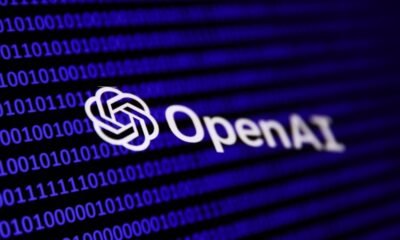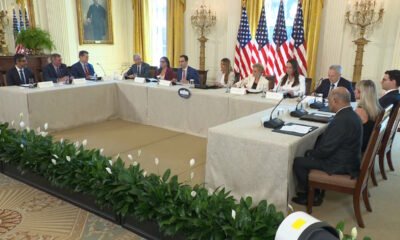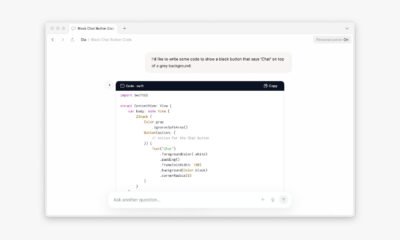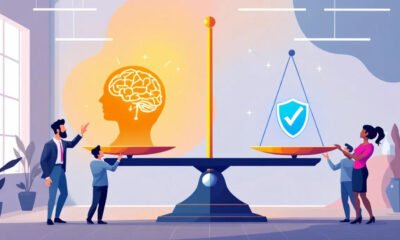Funding & Business
Gridware’s boxes literally listen to power lines to find outages
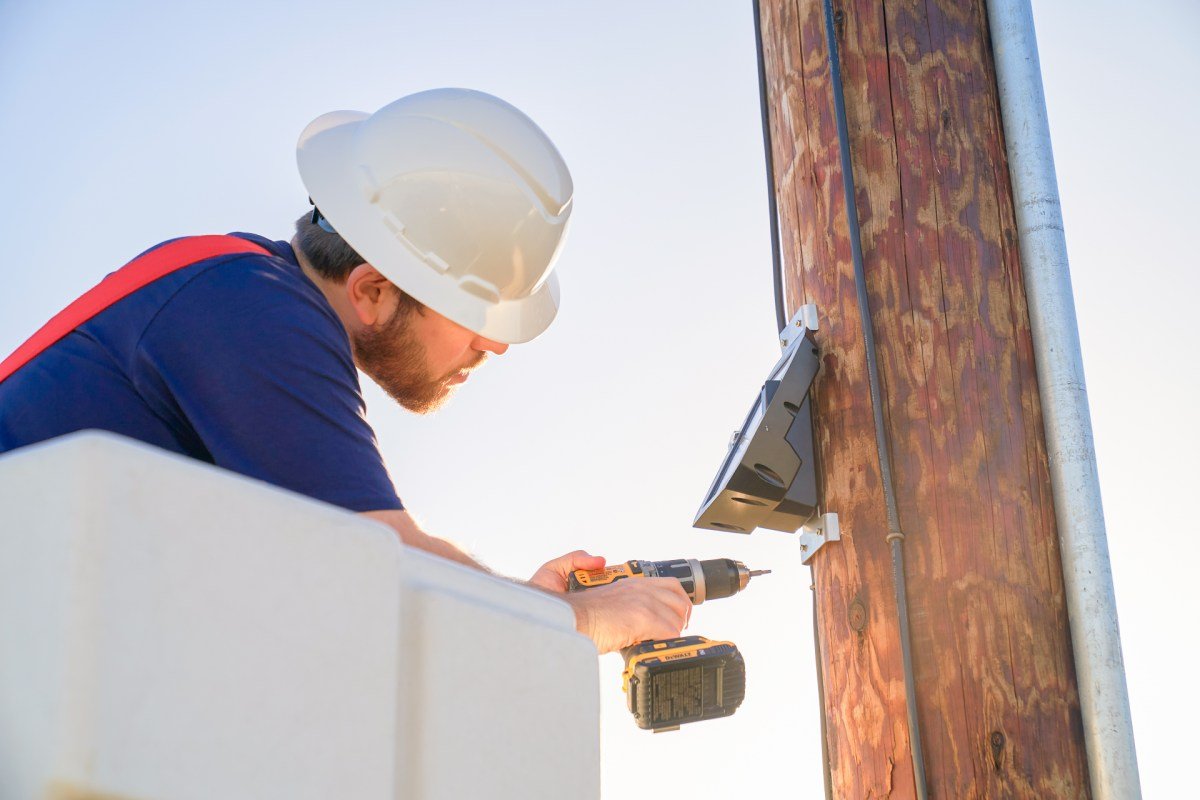
Tim Barat loved being a lineman at an electric company in Australia, where he grew up, even in the chaos of the Black Saturday brushfires in 2009 that torched over 1 million acres and left many without power or homes. But when he moved to the U.S. in 2013, his wife was less enthusiastic about him continuing down that path.
“My wife didn’t want me working on high voltage anymore for safety reasons,” Barat told TechCrunch.
So he went back to school, eventually getting his master’s degree in electrical engineering from UC Berkeley.
But he just couldn’t stop thinking about power lines. Or rather, listening to them.
“As humans, we can’t sense electricity. We can feel it. We can get electrocuted,” Barat said. Neither of those are conducive to a long career, though. So instead, electric company linemen use their other senses to get a handle on what’s happening during an outage.
“Generally, we’re looking, we’re listening. We’re feeling transformers vibrating differently, things like that. We hit a pole with a hammer and listen to how it sounds, the ringing afterwards, to tell if it’s hollow before we climb it for safety reasons.”
That’s a laborious and time-consuming process. Utility workers often have to traverse dozens of miles to trace the origin of an outage, whether it be a tree branch resting on a wire, a squirrel that got fried when it grounded a line, or a line downed by high winds. Only once they report the nature and exact location of the problem can the repair work begin.
“Some utilities spend nine figures per year on just these patrols alone,” Barat said.
There had to be a better way, Barat thought, and as he reflected on his experience as a lineman, he recalled all the times he spent listening to various bits of infrastructure. “This is where my mind went,” he said.
Together with Abdulrahman Bin Omar and Hall Chen, Barat founded Gridware. The company’s product is a device that literally listens for electrical problems.
“We think of the grid like a giant guitar as opposed to a circuit board,” Barat said. “It’s a physical thing. We need to be monitoring the physical attributes of the grid, too, not just voltage and current.”
Wires, poles, and transformers make different sounds depending on whether they’ve been hit by tree limbs, struck by cars, or buffeted by winds. Gridware’s sensors, which are mounted on the pole just below the lines, aren’t connected to the wires themselves. Instead they’re waiting for mechanical perturbations — sounds and vibrations — that the company’s AI and signal processing software have been trained to identify as different hazards to the grid.
Processing happens on each device, and when the software identifies a likely problem, it sends the details and location to the cloud through cellular or satellite connections (or, if the signal is weak, to another device to relay the message). The entire box is about the size of an iPad, and it’s powered by solar panels, with its base angled to allow those panels to face the sun. Because they don’t touch the power lines or need a separate power source, the devices are quick to install: Power lines can remain energized, and each box takes less than 15 minutes to mount and enable.
Barat said Gridware was cash-flow positive last year, but he felt it was still an opportune time to raise money. Gridware recently closed a $26.4 million Series A led by Sequoia, the company exclusively told TechCrunch. Existing investors Convective Capital, Fifty Years, Lowercarbon Capital, and True Ventures participated. “This raise was significantly easier in that we didn’t need it,” he said.
Gridware currently monitors over 1,000 miles of power lines for 18 companies from devices on 10,000 poles. The company previously worked with PG&E and ConEd to ensure the devices accurately report problems in the field.
But before Barat could get onto utilities’ poles, he needed to prove to himself that Gridware’s devices worked.
“I built my own grid,” he said. “It’s full size, 55-foot poles, 200-foot spans, and I spent years destroying it in every way, shape and form. I’ve had so many people watch how I blow up transformers, throw trees onto power lines, cut live power lines with bolt cutters — really doing a lot of risky activities to emulate those events.”
How did his wife feel about that? “I got in trouble,” he said, but added, “that’s behind us because we’re getting generally three to four events a day in the real world.”
Funding & Business
Buffett’s Oregon Utility Says Fire Lawsuits Pose Shutdown Risk

Berkshire Hathaway Inc.’s PacifiCorp says ongoing litigation from massive wildfires in 2020 that exposed the company to billions of dollars in damages is jeopardizing its ability to continue providing power to hundreds of thousands of customers in Oregon.
Source link
Funding & Business
Summers on Trump vs Fed, US Jobs Data Battle, Australia’s Gold Rush 2.0, India’s Risk Balance

This week, former US Treasury Secretary Lawrence H. Summers comments on why the markets have been slow to react to President Donald Trump’s efforts to fire Fed Governor Lisa Cook and further change the composition of the FOMC. And, concerns about BLS politicization are growing – what is the real problem behind the jobs numbers? Plus, gold prices near record highs are fueling a mining boom in Australia. Later, India is opening its markets to investors, but can regulators strike the right balance between risk and stability? (Source: Bloomberg)
Source link
Funding & Business
Momtazee’s Patient Square Exploring Taking Premier Private

Patient Square Capital, the investment firm started by former KKR & Co. dealmaker Jim Momtazee, is exploring an acquisition of health-care services company Premier Inc., according to people familiar with the matter.
Source link
-

 Business1 week ago
Business1 week agoThe Guardian view on Trump and the Fed: independence is no substitute for accountability | Editorial
-
Tools & Platforms4 weeks ago
Building Trust in Military AI Starts with Opening the Black Box – War on the Rocks
-

 Ethics & Policy1 month ago
Ethics & Policy1 month agoSDAIA Supports Saudi Arabia’s Leadership in Shaping Global AI Ethics, Policy, and Research – وكالة الأنباء السعودية
-

 Events & Conferences4 months ago
Events & Conferences4 months agoJourney to 1000 models: Scaling Instagram’s recommendation system
-

 Jobs & Careers2 months ago
Jobs & Careers2 months agoMumbai-based Perplexity Alternative Has 60k+ Users Without Funding
-

 Education2 months ago
Education2 months agoVEX Robotics launches AI-powered classroom robotics system
-

 Podcasts & Talks2 months ago
Podcasts & Talks2 months agoHappy 4th of July! 🎆 Made with Veo 3 in Gemini
-

 Funding & Business2 months ago
Funding & Business2 months agoKayak and Expedia race to build AI travel agents that turn social posts into itineraries
-

 Education2 months ago
Education2 months agoMacron says UK and France have duty to tackle illegal migration ‘with humanity, solidarity and firmness’ – UK politics live | Politics
-

 Podcasts & Talks2 months ago
Podcasts & Talks2 months agoOpenAI 🤝 @teamganassi


